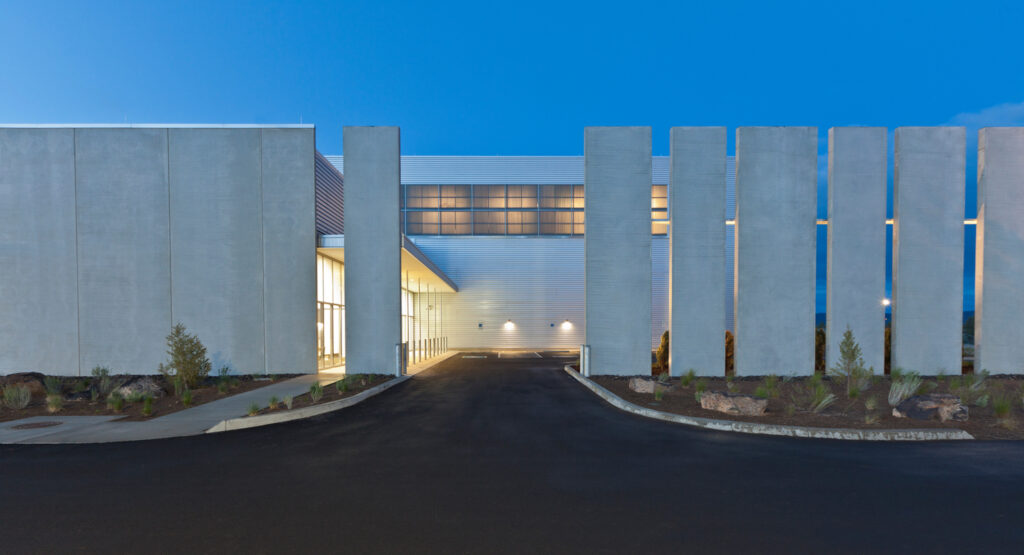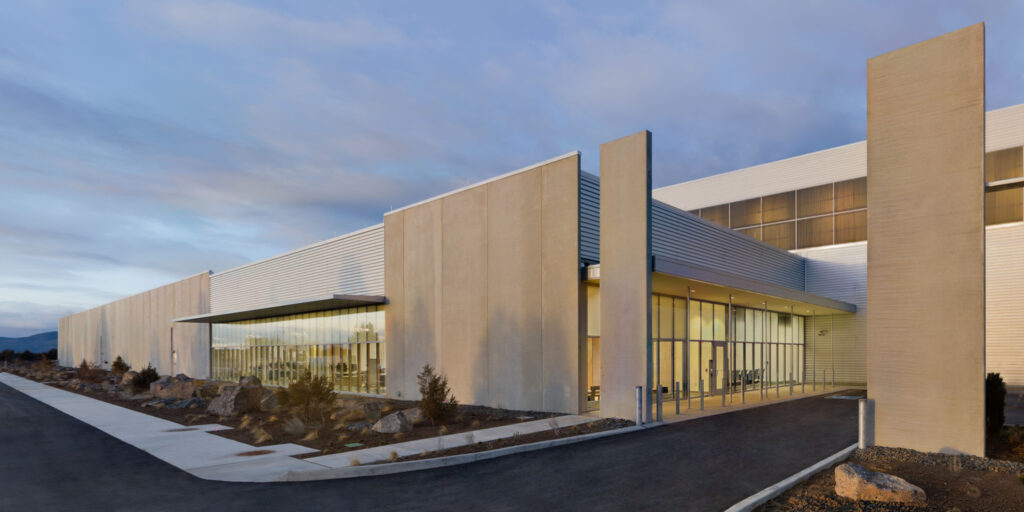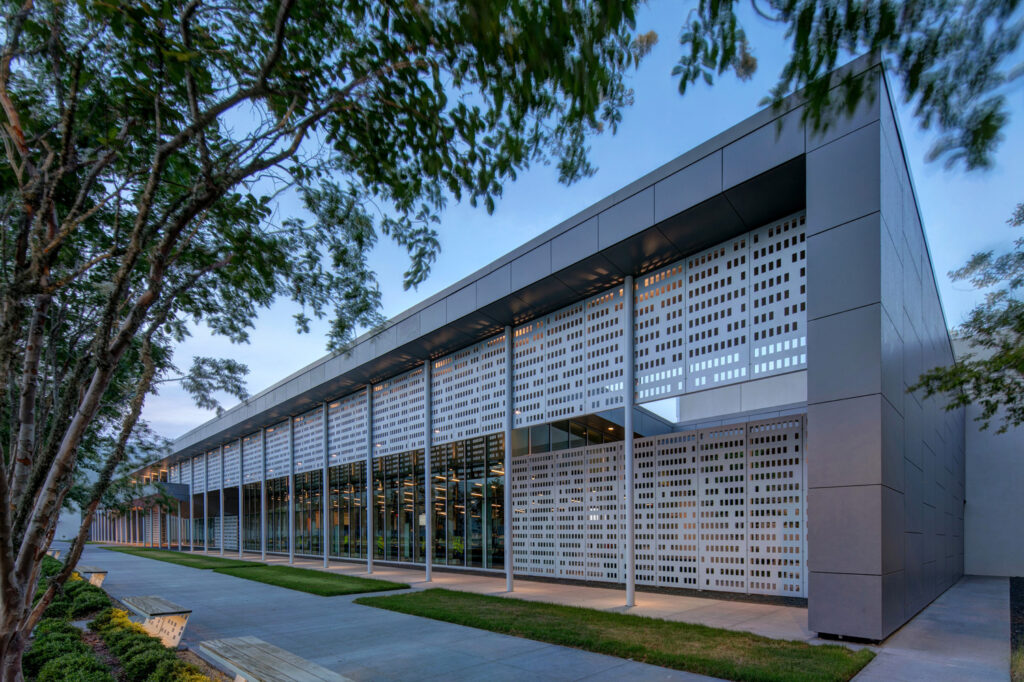
The Architect & Sustainability
By now, we’re all familiar with the significant impact that architecture and the construction industry have on the environment: of total annual global CO2 emissions, building operation, materials, and construction activities together account for 47%. That adds up to a lot of responsibility — and a lot of opportunity — for finding ways to reduce carbon and improve sustainability, even as we help our clients meet their business needs for more space, lower cost and shorter timelines.

Over the past several years, finding and maximizing opportunities for sustainable practice has required that architects understand a constantly expanding body of knowledge that extends far beyond foundational architectural training. Multiple ratings systems and green certifications, embodied carbon in materials, energy use and reduction, construction practices, modular systems, data interpretation … these are the new basics of real-world architectural knowledge. But beyond those basics is a more nuanced set of questions to answer: how do we improve upon what we’ve done before? How do we tie these design parameters into our models so that we can seamlessly design and choose the most sustainable option? What don’t we know and who do we need to include on teams to fill that gap? All of these questions have been especially prevalent at SNHA, where we work with clients who are leading the data center industry in energy reduction, and who are just as interested in constantly pushing sustainability forward.
Through our work with leading-edge technology companies and our own dedicated pursuit of sustainability initiatives, SNHA architects have developed considerable expertise across these cross-disciplinary areas — and that knowledge is constantly growing. Here’s a list of five areas architects need to add to their knowledge base in order to practice sustainability in 2022:
Energy – Operational Carbon
Data centers and data transmission networks each account for about 1% of global electricity use but rapid improvements in energy efficiency have helped limit energy demand growth. If most of the electricity consumed by data centers is consumed by the data halls’ IT equipment and the mechanical systems needed to cool it, we must still look at those facilities from an overall energy performance standpoint. Energy demand reduction, passive design strategies, building systems efficiency, and the use of on-site or off-site renewable energy sources should be prioritized and guide design decisions. Passive design is where architects can have the greatest impact: orientation and massing to help minimize heat gain, access to natural light to reduce artificial lighting needs, detailing and specification of a high-performance building envelope to reduce cooling loads, heating loads, and air leakage. As clients demand interim to real-time reviews, building performance analysis tools will help us evaluate and compare design options for cost versus energy efficiency.
LCA – Embodied Carbon
Having already achieved 100% renewable energy procurement to power their facilities, the goal of some of the biggest data center operators is now to reduce the embodied carbon of data center construction to further minimize greenhouse gas emissions. Based on whole life cycle assessment, some of the most embodied carbon intensive components in data centers are electrical distribution infrastructure, MEP equipment, telecommunication conduits, fire protection pipes and fittings, concrete foundations and floors, structural steel framing, envelope, and hot aisle containment assemblies. Our goal is to find construction materials with not only the lowest embodied carbon but that can also satisfy performance requirements such as durability, fire resistance, cost, and constructability. Staying up-to-date with material research and availability as well as utilizing carbon calculators and lifecycle assessment software allow us to identify, quantify, and recommend alternative products such as low carbon concrete and masonry, low carbon steel, or wood for primary structure and building envelope design.
Green Standards
The other side of LCA and energy analysis efforts is proving that the products used are actually ‘green’ and that the designed building systems are in compliance with the green rating system(s) in pursuit just as much as they are with the relevant Energy Codes. To give some idea of the expanded knowledge scope required for this exercise, there are nearly 600 green product certifications in the world and around 100 in the U.S. (circa 2019, BuildingGreen). Typical green certifications recognized by most green rating systems include Energy Star (appliances and fixtures), FSC (wood sourced from responsibly managed forests), GREENGUARD (healthy finishes), and Cradle to Cradle (LCA). Each certification touches on different aspects of the built environment and are used differently by the various green rating systems including LEED, WELL, Fitwel, Living Building Challenge, BREEAM, and PHIUS. As an architect, it’s key to be knowledgeable in at least one of these rating systems, if not multiple.

Construction Technologies
Most architectural firms, if not design-build, do not normally touch on the fabrication efforts of their design. Many leave that decision up to the fabricator or manufacturer and only input as much as necessary to make certain the design intent is kept. However, as many of the data center projects are prototypical, we at SNHA are finding ourselves delving more and more into prefabrication strategies, requiring deeper conversations with our clients and contractors to more efficiently deliver 500,000 to 1 million square-foot facilities within a rapid timeline of about two years. What does this have to do with sustainability? Plenty. According to a 2018 conference paper from the International Conference on Sustainability in Energy and Buildings, “Prefabrication is 50% more efficient at using sources of energy, 30% more efficient at using water and 40% more efficient when it comes to using raw materials… The prefabrication method reduces construction waste by 40% and CO2 emissions by 35%.” If approaching architecture ‘like Ford’ means we also reduce the carbon footprint of our design, then maybe the building as an interdisciplinary product is the right path forward.
Data Analytics
The last and all encompassing skill for us architects to learn is data. How do we manage all of the above information efficiently and effortlessly and still get what we need out of it? SNHA, like most firms, uses Revit to track a lot of the information. However, even Revit has its shortcomings as not all plug-ins are built equally. For example, to understand the energy use intensity of our prototypical data centers, we tested out three different software plug-ins over the course of a year to finally land on cove.tool as our primary energy modeling plug-in. It then took another year to fully incorporate the workflow into our in-progress and completed projects. While this year we’re working to incorporate energy modeling in the design phase across our portfolio, we’re also working to include LCA plug-ins into our Revit workflow. Our focus will be on getting accurate materials and components quantities from our models and matching them with the most representative carbon intensity factor from plants’ or products’ specific EPDs. To run quicker analysis in the conceptual design phase, we will adopt a “simple box” approach using a more automated process with industry-average values, not requiring a developed Revit model.
While working on sustainable design issues within our field of expertise and applied to specific building types, we also want to keep larger environmental questions in sight. Among them, for example, the loss of nature caused by pollution and ecosystem destruction, considered by some as a greater peril than carbon emissions and climate change themselves. As architects, we’re armed with the creativity to consider large scale problems and ideate solutions, as well as the practice of lifelong learning. Our role – though one among many – is powerful and ever-expanding, and by continuing to expand our knowledge base, we can be problem solvers in all forms, in order to make a change for a better future.
